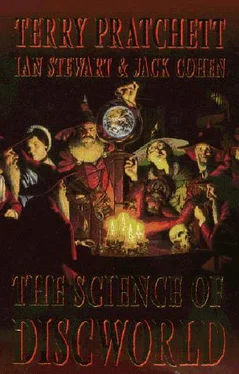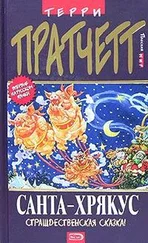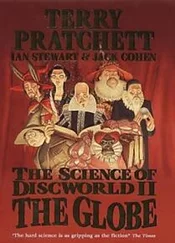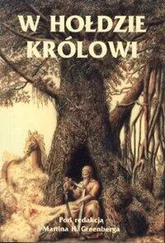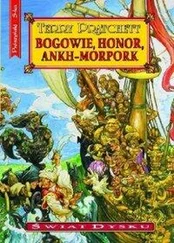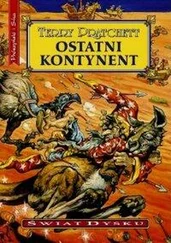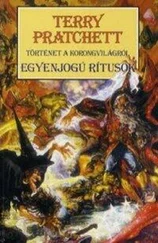Terry Pratchett - Science of Discworld
Здесь есть возможность читать онлайн «Terry Pratchett - Science of Discworld» весь текст электронной книги совершенно бесплатно (целиком полную версию без сокращений). В некоторых случаях можно слушать аудио, скачать через торрент в формате fb2 и присутствует краткое содержание. Жанр: Фантастика и фэнтези, на английском языке. Описание произведения, (предисловие) а так же отзывы посетителей доступны на портале библиотеки ЛибКат.
- Название:Science of Discworld
- Автор:
- Жанр:
- Год:неизвестен
- ISBN:нет данных
- Рейтинг книги:4 / 5. Голосов: 1
-
Избранное:Добавить в избранное
- Отзывы:
-
Ваша оценка:
- 80
- 1
- 2
- 3
- 4
- 5
Science of Discworld: краткое содержание, описание и аннотация
Предлагаем к чтению аннотацию, описание, краткое содержание или предисловие (зависит от того, что написал сам автор книги «Science of Discworld»). Если вы не нашли необходимую информацию о книге — напишите в комментариях, мы постараемся отыскать её.
Science of Discworld — читать онлайн бесплатно полную книгу (весь текст) целиком
Ниже представлен текст книги, разбитый по страницам. Система сохранения места последней прочитанной страницы, позволяет с удобством читать онлайн бесплатно книгу «Science of Discworld», без необходимости каждый раз заново искать на чём Вы остановились. Поставьте закладку, и сможете в любой момент перейти на страницу, на которой закончили чтение.
Интервал:
Закладка:
Credit for coming up with a scheme that was basically right goes to Dimitri Mendeleev, who finished the first of a lengthy series of 'periodic charts' in 1869. His chart included 63 known elements placed in order of atomic weight. It left gaps where undiscovered elements allegedly remained to be inserted. It was 'periodic' in the sense that the properties of the elements started to repeat after a certain number of steps, the commonest being eight.
According to Mendeleev, the elements fall into families, whose members are separated by the aforementioned periods, and in each family there are systematic resemblances of physical and chemical properties. Indeed those properties vary so systematically as you run through the family that you can see clear, though not always exact, numerical patterns and progressions. The scheme works best, however, if you assume that a few elements are missing from the known list, hence the gaps. As a bonus, you can make use of those family resemblances to predict the properties of those missing elements before anybody finds them. If those predictions turn out to be correct when the missing elements are found, bingo. Mendeleev's scheme still gets modified slightly from time to time, but its main features survive: today we call it the Periodic Table of the Elements.
We now know that there is a good reason for the periodic structure that Mendeleev uncovered. It stems from the fact that atoms are not as indivisible as Democritus and Boyle thought. True, they can't be divided chemically, you can't separate an atom into component pieces by doing chemistry in a test tube, but you can 'split the atom' with apparatus that is based on physics rather than chemistry. The 'nuclear reactions' involved require much higher energy levels, per atom, than you need for chemical reactions, which is why the old-time alchemists never managed to turn lead into gold. Today, this could be done, but the cost of equipment would be enormous, and the amount of gold produced would be extremely small, so the scientists would be very much like Discworld's own alchemists, who have only found ways of turning gold into less gold.
Thanks to the efforts of the physicists, we now know that atoms are made from other, smaller particles. For a while it was thought that there were just three such particles: the neutron, the proton, and the electron. The neutron and proton have almost equal masses, while the electron is tiny in comparison; the neutron has no electrical charge, the proton has a positive charge, and the electron has a negative charge exactly opposite to that of the proton. Atoms have no overall charge, so the numbers of protons and electrons are equal. There is no such restriction on the number of neutrons. To a good approximation, you get an element's atomic weight by adding up the numbers of protons and neutrons, for example oxygen has eight of each, and 8 + 8 = 16, the atomic weight.
Atoms are incredibly small by human standards, about a hundred millionth of an inch (250 millionths of a centimetre) across for an atom of lead. Their constituent particles, however, are considerably smaller. By bouncing atoms off each other, physicists found that they behave as if the protons and neutrons occupy a tiny region in the middle, the nucleus, but the electrons are spread outside the nucleus over what, comparatively speaking, is a far bigger region. For a while, the atom was pictured as being rather like a tiny solar system, with the nucleus playing the role of the sun and the electrons orbiting it like planets. However, this model didn't work very well, for example, an electron is a moving charge, and according to classical physics a moving charge emits radiation, so the model predicted that within a split second every electron in an atom would radiate away all of its energy and spiral into the nucleus. With the kind of physics that developed from Isaac Newton's epic discoveries, atoms built like solar systems just don't work. Nevertheless, this is the public myth, the lie-to-children that automatically springs to mind. It is endowed with so much narrativium that we can't eradicate it.
After a lot of argument, the physicists who worked with matter on very small scales decided to hang on to the solar system model and throw away Newtonian physics, replacing it with quantum theory. Ironically, the solar system model of the atom still didn't work terribly well, but it survived for long enough to help get quantum theory off the ground. According to quantum theory the protons, neutrons, and electrons that make an atom don't have precise locations at all, they're kind of smeared out. But you can say how much they are smeared out, and the protons and neutrons are smeared out over a tiny region near the middle of the atom, whereas the electrons are smeared out all over it.
Whatever the physical model, everyone agreed all along that the chemical properties of an atom depend mainly on its electrons, because the electrons are on the outside, so atoms can stick together by sharing electrons. When they stick together they form molecules, and that's chemistry. Since an atom is electrically neutral overall, the number of electrons must equal the number of protons, and it is this 'atomic number', not the atomic weight, that organizes the periodicities found by Mendeleev However, the atomic weight is usually about twice the atomic number, because the number of neutrons in an atom is pretty close to the number of protons for quantum reasons, so you get much the same ordering whichever quantity you use. Nevertheless, it is the atomic number that makes more sense of the chemistry and explains the periodicity. It turns out that period eight is indeed important, because the electrons live in a series of 'shells', like Russian dolls, one inside the other, and until you get some way up the list of elements a complete shell contains eight electrons.
Further along, the shells get bigger, so the period gets bigger too. At least, that's what Joseph (J. J.) Thompson said in 1904. The modern theory is quantum and more complicated, with far more than three 'fundamental' particles, and the calculations are much harder, but they have much the same implications. Like most science, an initially simple story became more complicated as it was developed and headed rapidly towards the Magical Event Horizon for most people.
But even the simplified story explains a lot of otherwise baffling things. For instance, if the atomic weight is the number of protons plus neutrons, how come atomic weight isn't always a whole number? What about chlorine, for instance, with atomic weight 35.453? It turns out there are two different kinds of chlorine. One kind has 17 protons and 18 neutrons (and 17 electrons, naturally, the same as protons), with atomic weight 35. The other kind has 17 protons and 20 neutrons (and 17 electrons, again), an extra two neutrons, which raises the atomic weight to 37. Naturally occurring chlorine is a mixture of these two 'isotopes', as they are called, in roughly the proportions 3 to 1. The two isotopes are (almost) indistinguishable chemically, because they have the same number and arrangement of electrons, and that's what makes chemistry work; but they have different atomic physics.
It is easy for a non-physicist to see why the wizards of UU considered this universe to be made in too much of a hurry out of obviously inferior components ...
Where did all those 112 elements come from? Were they always around, or did they get put together as the universe developed?
In our Universe, there seem to be five different ways to make elements:
• Start up a universe with a Big Bang, obtaining a highly energetic ('hot') sea of fundamental particles. Wait for it to cool (or possibly use one you made earlier ...). Along with ordinary matter, you'll probably get a lot of exotic objects like tiny black holes, and magnetic monopoles but these will disappear pretty quickly and only conventional matter will remain, mostly. In a very hot universe, electromagnetic forces are too weak to resist disruption, but once the universe is cool enough, fundamental particles can stick together as a result of electromagnetic attraction. The only element that arises directly in this manner is hydrogen, one electron joined with one proton. However, you get an awful lot of it: in our universe it is by far the commonest element, and nearly all of it arose from the Big Bang. Protons and electrons can also associate to form deuterium (one electron, one proton, one neutron) or tritium (one electron, one proton, two neutrons), but tritium is radioactive, meaning that it spits out neutrons and decays into hydrogen again. A far more stable product is helium (two electrons, two protons, two neutrons), and helium is the second most abundant element in the universe.
Читать дальшеИнтервал:
Закладка:
Похожие книги на «Science of Discworld»
Представляем Вашему вниманию похожие книги на «Science of Discworld» списком для выбора. Мы отобрали схожую по названию и смыслу литературу в надежде предоставить читателям больше вариантов отыскать новые, интересные, ещё непрочитанные произведения.
Обсуждение, отзывы о книге «Science of Discworld» и просто собственные мнения читателей. Оставьте ваши комментарии, напишите, что Вы думаете о произведении, его смысле или главных героях. Укажите что конкретно понравилось, а что нет, и почему Вы так считаете.
